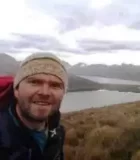Located in the provinces of Esmeraldas and Manabi, this nature reserve is one of the last untouched rainforests of the Ecuadorian coast. There is a very high biodiversity. Mache-Chindul is one of the most recent protected areas. Its name comes from the mountain range that rises in the middle of the park. The Ecuadorian state protects this zone, arguing that it is where the main native forest areas of the coastal region are to be found. This despite the constant pressure to develop the forest.
It is a mountainous zone with a lot of water that feeds the larger rivers of Manabí (the Cuaque, the Cojimíes and the Cheve) and of Esmeraldas (the Muisne, the Atacames, the Tiaone and the Dógola). Even in the drier periods of the year, there is a cloud cover in the highest zones of the reserve.
The area has always been in the hands of the Afro-inhabitants of Esmeraldas province and the Chachi Indians. The pressure that logging companies exert on the park thus threatens not only the natural but also the cultural resources of the zone.
Despite the exotic landscapes, with waterfalls and lakes surrounded by pristine forest, such as along the Rio Ene or in Boca de Tasone, the great value of the park lies in its enormous biodiversity.
It is difficult to get into the reserve, especially when it rains. It may even be impossible between January and July (the rainy season in that zone). Since there is no facility or infrastructure in the reserve, it is only possible to visit it with a solid guide.
The road from Santo Domingo de los Colorados to Esmeraldas passes the town of Quinidé. Near Quinindé, along the same main road, you will find the entrance to the village of Herrera, from where a road leads to the Y and to the lake (la Laguna). Taking into account the weather conditions, it is possible to get to Estero Platano and even to the mouth of the Rio Taguales, at the boundary of the park. This is the most practical access and from here you can also reach the private park Bilsa.
There are other ways to get into the park from Esmeraldas, Atacamos or Muisne, but these accesses are very unpredictable and complicated.
From Esmeraldas you can get to the Rio Ene with great difficulty, north of the park.
Another option is to follow the river from Atacames to a village called Unión de Atacames, before arriving in the hamlet of Santa Teresa, not far from the park boundary. From here you can then set up a tough hike with mules to the park.
From Muisne, you can take a motorboat and sail along the Rio Boca del Sucio to the Chachi community of San Salvador. This way you also reach the boundaries of the park.
 I am Tom from Belgium and I have been living in Ecuador for more than 10 years. I got my guiding diploma here. Traveling and discovering new places is my passion. Together with the travel agency Descubre-Ecuador, we offer tailor-made tours in Galapagos and on the Ecuadorian mainland.
I am Tom from Belgium and I have been living in Ecuador for more than 10 years. I got my guiding diploma here. Traveling and discovering new places is my passion. Together with the travel agency Descubre-Ecuador, we offer tailor-made tours in Galapagos and on the Ecuadorian mainland.